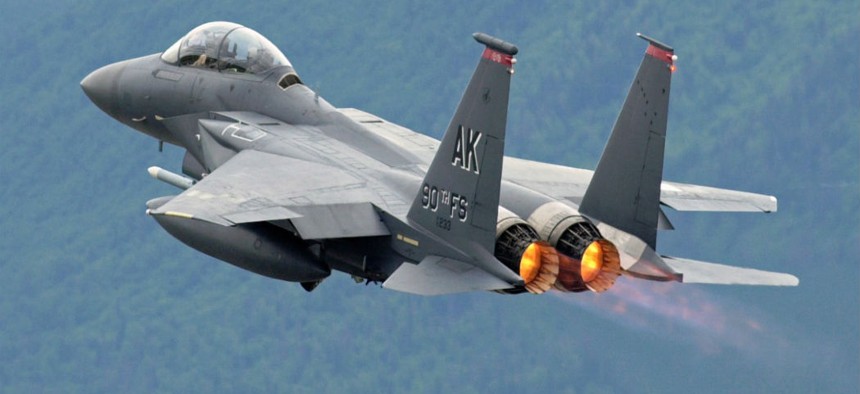Lockheed upgrades Air Force fighter jet targeting pod
Low altitude, heat sensing software system gains an upgraded targeting pod.
The Sniper Advanced Targeting Pod (ATP) that, combined with a navigational pod, makes up the latest version of the low altitude navigation and targeting infrared for night (LANTIRN) system, recently received two-color laser spot tracking and Global Scope software upgrades, which Lockheed Martin will continue to support and maintain through a recently awarded contract.
The LANTIRN system was the first wide-field forward-looking navigation system designed for the Air Force and is made up of a targeting pod and a navigational pod, according to the Air Force fact sheet.
Two-color laser spot tracking technology detects points of light from laser projections and uses a software algorithm to distinguish the motion pattern of the laser points from the motion of the sensor in order to determine the location and movement of the laser points, according to research conducted by the Naval engineers.
Lockheed’s Global Scope open architecture software for the Sniper ATP is designed specifically for non-traditional intelligence, surveillance, and reconnaissance operations and enables playback of video data and focus on particular areas, according to Lockheed.
In addition, the targeting pod’s high-resolution forward-looking sensor within the targeting pod transmits an infrared image of the target to the pilot, while a laser designator-rangefinder guides the firing of laser-guided weaponry.
The navigational pod of the LANTIRN system makes it possible for the fighter aircraft to fly in the first place, overcoming the low altitudes and poor weather conditions in order to hit assigned targets. It has terrain following technology consisting of a radar system and fixed infrared sensor that adjust the flight path and elevation of the aircraft according to low and high points in the terrain in order to maintain a pre-programed distance between the aircraft and the ground. These adjustments are essential during low-level flights in degraded environments because the pilot has no visibility outside the cockpit.
Combined, the Sniper ATP and the navigational pod enable the LANTIRN system to ensure solo pilots can precisely target and hit a location on a single pass, according to the Air Force. The system proved particularly useful during Operation Desert Storm, when it was able to use infrared heat signature anomalies to detect enemy tanks that were buried under sand for camouflage, according to Lockheed Martin.
The indefinite-delivery/indefinite quantity contract awarded to Lockheed for the support and program updates of the Sniper ATP-equipped LANTIRN system is for $200 million and work is expected to be finished in March 2022.





